How to Create a Job Seeker Brand to Land the Job You Want
“For better or worse, in today’s world everyone is a brand. Whether you’re applying for a job, asking for a promotion, or writing a dating profile, your success will depend on getting others to recognize your value. So you need to get comfortable marketing yourself.”
You’ve been laid off. Whether it happened last week or three weeks ago, your world has undoubtedly become a different place. Nothing looks or feels the same as you now spend 80% of your time focused on replacing the job (and income) you lost, and the other 20% trying to hold your emotions together.
Like thousands of other laid off souls, you posted your layoff announcement on LinkedIn. The initial wave of support was encouraging, giving you hope that your joblessness might be short lived. But now, days, weeks, or months later, you’re still unemployed and your stress is only mounting.
Once again, you turn to your LinkedIn network. But what should you say? Should you pour out your woes, to “pull at others’ heartstrings?” Or, do you tell your network how frustrated you’ve become, providing another space for other job seekers to vent? Or, should you write another flat “Open To Work” message, along with your skills and other qualifying information? And, does it matter?
Yes, it does!
The LinkedIn market
You already know that LinkedIn is one of the world’s most impactful resources for people wanting to make professional connections or find new jobs. But like any powerful tool, it’s important to be strategic in how you use it and aware of potential outcomes from not using it accordingly.
While discussing world issues and socializing are aspects of posting and networking on LinkedIn, as a job seeker, selling is now your top priority. What are you selling? Yourself.
If your intention is to use LinkedIn to secure employment–either directly or indirectly from your network–anything you post must be steered in the direction of that goal. Everything you share and write will reflect on you as a potential candidate. As a seller, you now must develop a brand that resonates with your target audience: recruiters, hiring managers, and even employees of companies with whom you want to work. Without a brand that people want, you will have a difficult time rising above other job seekers in this highly competitive market.
Your personal brand

“85 percent of hiring managers report that a job candidate’s personal brand influences their hiring decisions.”
“Your story can play an important role in establishing or boosting your career. In fact, an overwhelming 85 percent of hiring managers report that a job candidate’s personal brand influences their hiring decisions. Your personal brand should highlight your strengths, establish a reputation, build trust, and communicate the unique attributes that you bring to your current (or desired) industry. Cultivated well, your personal brand will signal to employers whether or not you’ll be the right fit for an open role.” (Northeastern.edu)
The truth is, the moment you announce you’re open to work, you become a candidate for sale. This means it’s time to focus on a few things:
- Building a job seeker brand
- Strengthening your job seeker brand reputation
- Engaging with your target audience
It’s doing these things that will then help you to generate qualified leads, and ultimately sell your service. Let’s look at each one closer.
Building your job seeker brand
“You have both visual and written elements at your disposal to channel a new energy to the space you take up in the world, whether you’re an intrapreneur looking for career advancement or a self-employed designer wanting to show the world what you’re capable of. Crafting a strong and authentic personal brand is the key to securing more interviews, being considered for more promotions and giving people around you a memorable sense of who you are, even when you’re not in the room.” (Canva.com)
Ask yourself, what are your values? What is it you want people to say about you as a professional? What sets you apart from others? What is your PVP–Personal Value Proposition? “Like corporate brands, a personal brand must be demonstrated in every communication,” writes Bill Barnet for Harvard Business Review.
Creating a job seeker brand is not about creating a facade, or being inauthentic. It’s about unearthing your true values, strengths, and unique traits and figuring out how these combined form a cohesive, professional identity that is valuable to the prospects you want to target. Notch out some quiet time to really learn about yourself in these areas so you are able to transfer them to your LinkedIn presence.
Strengthening your job seeker brand reputation
“Audiences evaluate your worth when you show them why you’re worth it. Align your values, goals, motives, aspirations and communication to your personal brand. A personal brand should be congruent to your reputation. A non-congruent personal brand is like a bad odor. It spoils the atmosphere.” (Forbes.com)
As a job seeker, be clear on what your brand is, and be consistent. That consistency helps build your reputation. You cannot appear optimistic one one day, then negative or bitter the next. Do not fluctuate up and back. Not only does this confuse people and raise red flags; but any negative impression you make will leave a stronger and longer impact than a positive one.
It’s personally frustrating for me to see very talented job seekers make posts on LinkedIn about their job search efforts that are negative. While I completely understand their feelings behind their posts, I know that these types of posts affect their brands and can cost them their reputations.
For example, the below post from LinkedIn was written by someone seeking a high level position. The person clearly spells out what they want, but does it in a manner that’s negative, somewhat entitled, and doesn’t tell anyone what they have to offer. It’s almost like, “I’m about to throw in the towel, so here’s what you need to give me.”
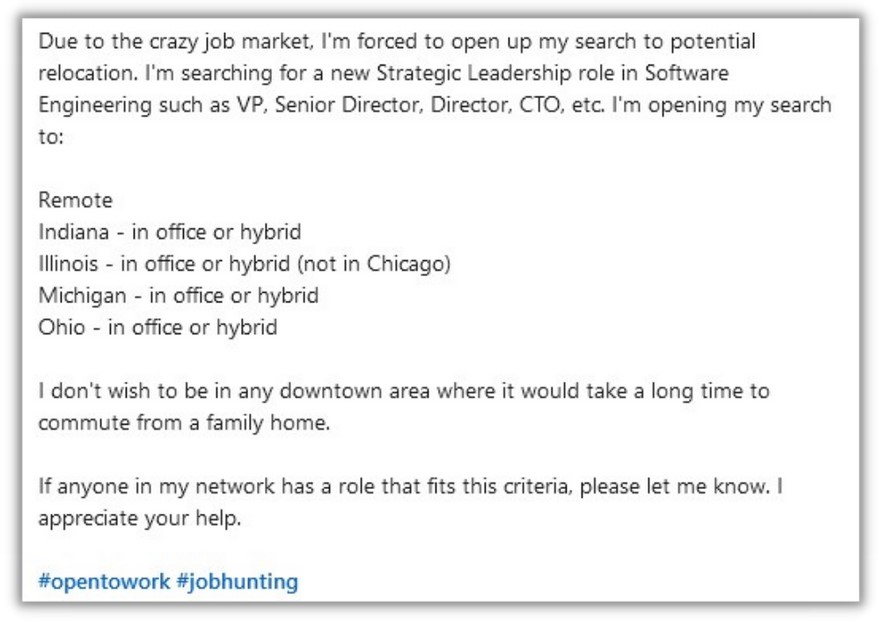
This job seeker is not helping their brand. Instead, they come across as bitter, demanding, and unattractive.
How much positive attention is this person likely to get from their desired audience? How do you think this post will make their target audience feel about their brand? And, what do you think this does to the poster’s reputation?
Engaging with your target audience
“It’s important to engage with your fans and followers on a regular basis. Respond to questions, respond to comments and share information or content that will be helpful for them. You can also ask for feedback from time to time, which will help you build relationships with them.” (RobinWaite.com)
If you’re using LinkedIn for any reason, it’s crucial to know who your target audience is. Otherwise, you’re just floundering around. Worse, if you randomly post about various topics, LinkedIn’s algorithms may select your target audience for you, giving your posts attention from people who are completely unable to help you in your quest for a new job.
In fact, before you even start to craft your job seeker brand you should determine who your target audience is. As a job seeker, your target audience isn’t just recruiters. That’s too broad. Narrow it down to the type of recruiters and the type of companies. This requires a bit of research, but it’s the only way to ensure your posts and comments are appealing to the exact audience you want.
Once you’ve determined your target audience, you need to engage with them on a consistent basis. Further, every post you make should be something of interest to your audience, and relevant to your goal of landing a connection or interview. Keeping your posts focused will not only attract your target audience, but it will establish you as someone knowledgeable in your field, which is what you want when you’re looking for a new job.
“Use LinkedIn to share your knowledge and experience. Talk about your successes and failures. If you do it regularly, people will start noticing you,” writes Kasia Kowalska for Hubspot. “You might even become an industry expert. Eventually, all you’ll have to do is let the LinkedIn community know you’re searching for a new challenge, and opportunities will fly your way.”
Generating leads and selling your service
“Networking is one of the most effective job searching strategies available. It allows you to learn about openings that may not be widely advertised if they are advertised at all. The more people you connect with, and with whom you communicate that you’re looking for opportunities, the more likely you are to learn about open positions.” (Indeed.com)
Generating leads
When you establish your job seeker brand, build your brand reputation, and consistently engage with your target audience, you will create a network which becomes full of qualified leads: people who may be interested in learning more about you or who know someone who might want to meet you. These people are your most valuable connections and they must be nurtured at all cost.
This means, you will want to step up on some of your interactions with these folks, offering them more content and comments that appeal directly to them. Don’t just “like” their posts, leave an insightful message. Deepen any relationship you have built with them. (For some fascinating stats on the impact of lead nurturing, check out this piece by SmallBizGenius.net.) These leads are people you send direct messages to when you find an article you know they’ll enjoy reading. You could also ask them industry-related questions.These quality leads could be recruiters, hiring managers, and individuals from companies for which you’d like to work.
Selling your service
After all the work you’ve put into creating your brand and nurturing your leads, you can begin to offer your services to your best leads. However, just because you’ve become friendly on LinkedIn doesn’t mean you are friends. You still shouldn’t use anything less than finesse when you engage with them for information about an opening, or a referral. Remember: consistency in personality is key.
When approaching recruiters, managers, or employees from target companies, be transparent and authentic. By the time you reach this point you should have a clear idea how to approach each one. If you don’t, go back to the nurturing stage. Your “leads” are not ready to be “sold” anything if they haven’t been sufficiently nurtured.
When your connections have been properly nurtured, they have gotten to know you almost as well as you know them. It’s no secret to them that you are looking for a job. However, that doesn’t mean you can ask them for something without anything in return. By this I mean, make sure you thoroughly understand the roles they are trying to fill before you ask for assistance. If you ask for help in a position they aren’t responsible for filling you may be wasting their time.
If they have roles that closely match your interests, this facilitates a win-win situation. They have a job, and you have a candidate (yourself) they need. Now is a great time to talk. In fact, by this point, they may even reach out to you!
When you get the okay, forward your resume to them, and be prepared to go through all the remaining channels as anyone else. Don’t ask for special favors. Don’t try to pull at their heartstrings. Remain professional throughout
LinkedIn posting tips
Now that we’ve talked about creating a job seeker brand, engaging your audience, and selling, it’s time to point out some best practices for posting as a job seeker. During this difficult time of unemployment, it’s not always easy to stick to posting practices that align with your brand. Seeing other job seekers in your situation venting on LinkedIn, it can be easy to get sucked into their conversations in the name of support, and not realize you are harming your image.
Below are best practices for posting on LinkedIn, even discussing your job search journey, without damaging your job seeker brand.
Job seeker posting best practices
- Get your emotions in check before you open the platform. Your feed will contain a lot of posts that can trigger you.
- Craft your Open To Work posts offline. Even if you think you’re perfectly calm and detached, don’t trust yourself to make your job searching posts unrehearsed. Even masked sarcasm and bitterness can be picked up by others.
- Post regularly. Consistency is key when it comes to building your job seeker brand on LinkedIn. Try to post at least three times a week to keep your audience engaged and showcase your expertise.
- Be authentic. Your posts should reflect your personality and values. Share your unique perspective and experiences to stand out from the crowd.
- Remind yourself each time you make a post that it potentially will be read by recruiters or hiring managers that could have a job for you. Anything you say can, and will, be used for or against you.
- Be human, but stay in the “half full” part of the glass. Spend more time focused on the future, demonstrating a positive outlook. Your posts should be upbeat and optimistic. Avoid complaining or being negative, as this can turn off potential employers.
- Check the quality of your activity. Networking, even for those laid off, is still giving more than you take. Your posts should offer value to your network. Whether it’s sharing a helpful resource or providing tips on a specific topic, try to provide content that is useful and informative.
- To help you engage your target audience, join groups that your audience is likely to follow and offer insightful feedback on their posts. Share content relevant to your target profession and industry.
- Use your posts to showcase your skills and expertise. This can include sharing your portfolio or highlighting your areas of expertise.
- Respond to comments on your posts. When people comment on your posts, make sure to respond in a timely and thoughtful manner. This can help you build relationships and show that you value your network.
Your job seeker brand
Now that you know how to create a brand and carry it through to the selling stage, it’s time to put it into action. Again, I understand this is a difficult period in your life, and anything outside of writing a resume can seem overwhelming. However, this is when you need to push through. The sooner you do, the faster you can make it through this challenging time.
So, before you begin to make your first post, spend some time in a quiet space to decide who you are as a professional, what your values are, what your career needs are, and who your target audience is. Having clarity ahead of time will help keep you from floundering around on LinkedIn, and making mistakes that could be damaging to your job seeker brand image.
Do you need help with your job seeker branding? We help job seekers create brands for their LinkedIn profiles that get results! See what we can do for you!
Category: Featured, Job Search, LinkedIn, Networking

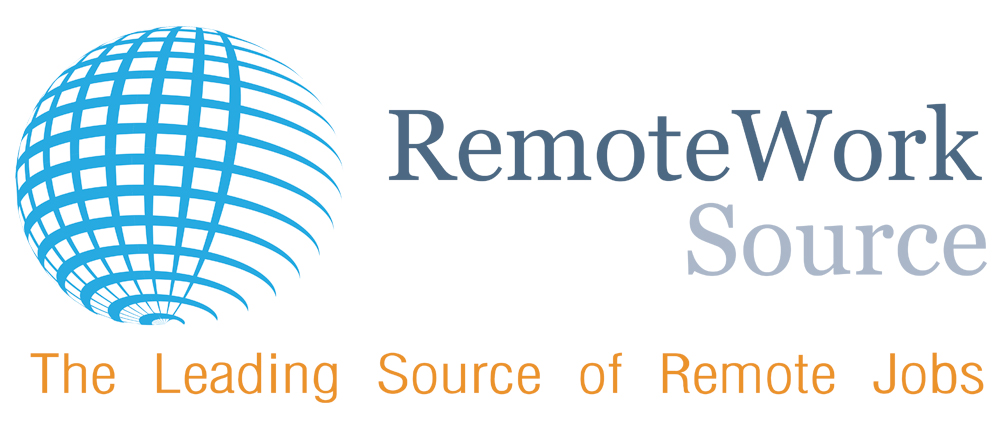



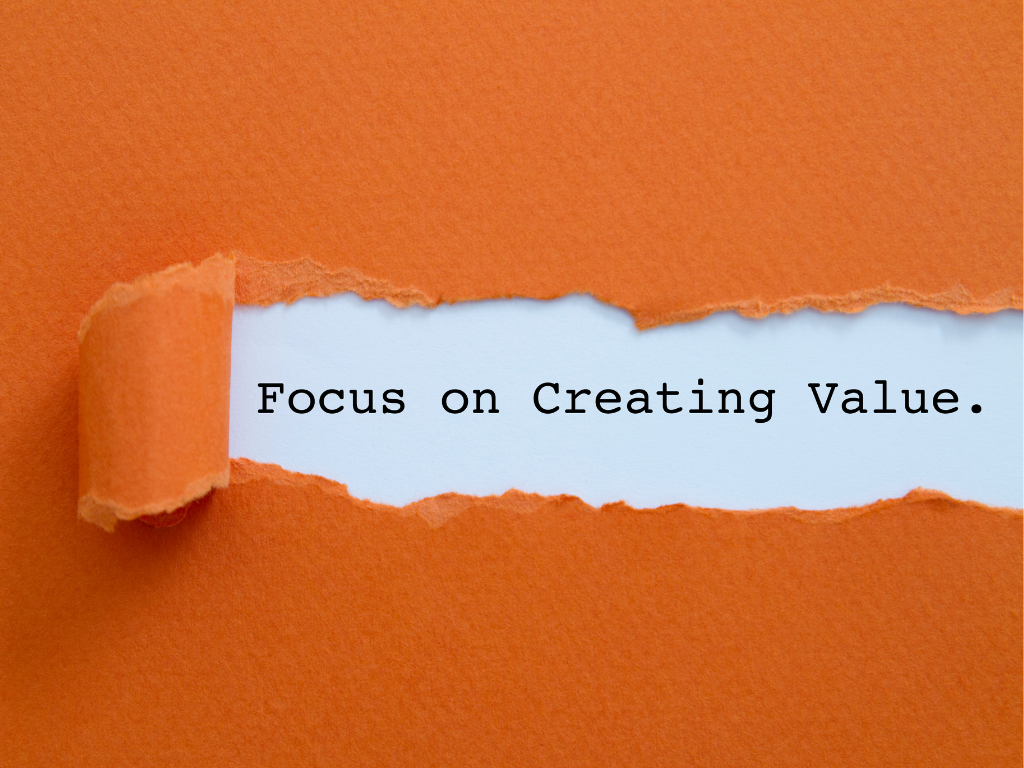




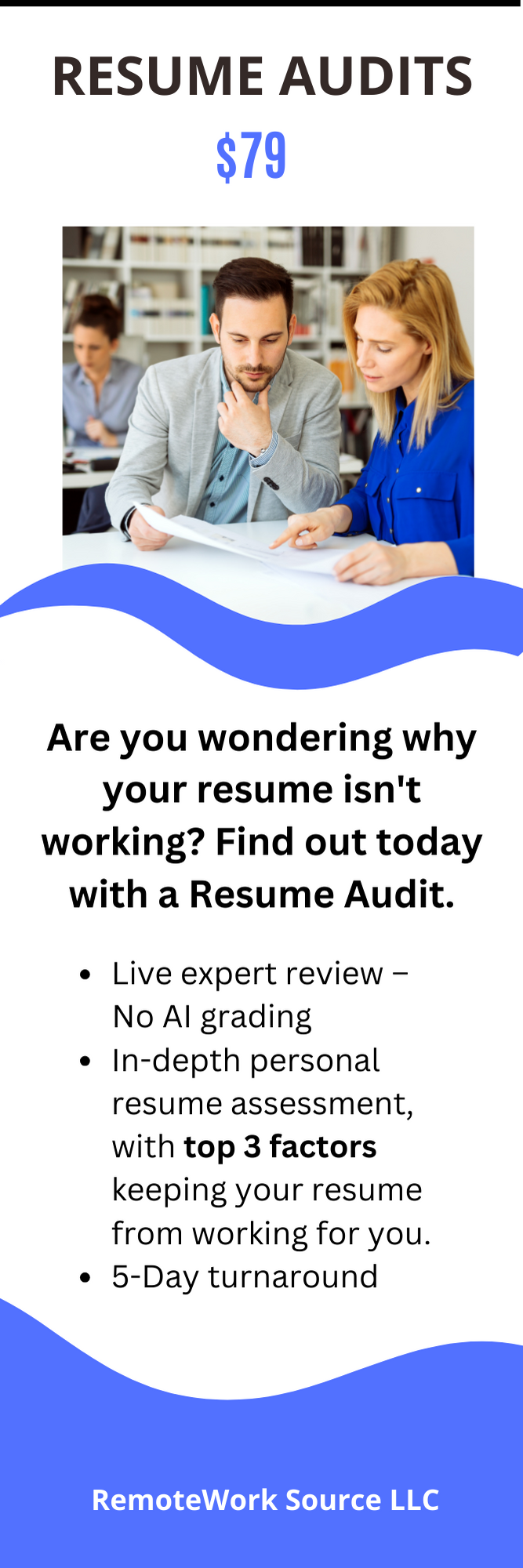
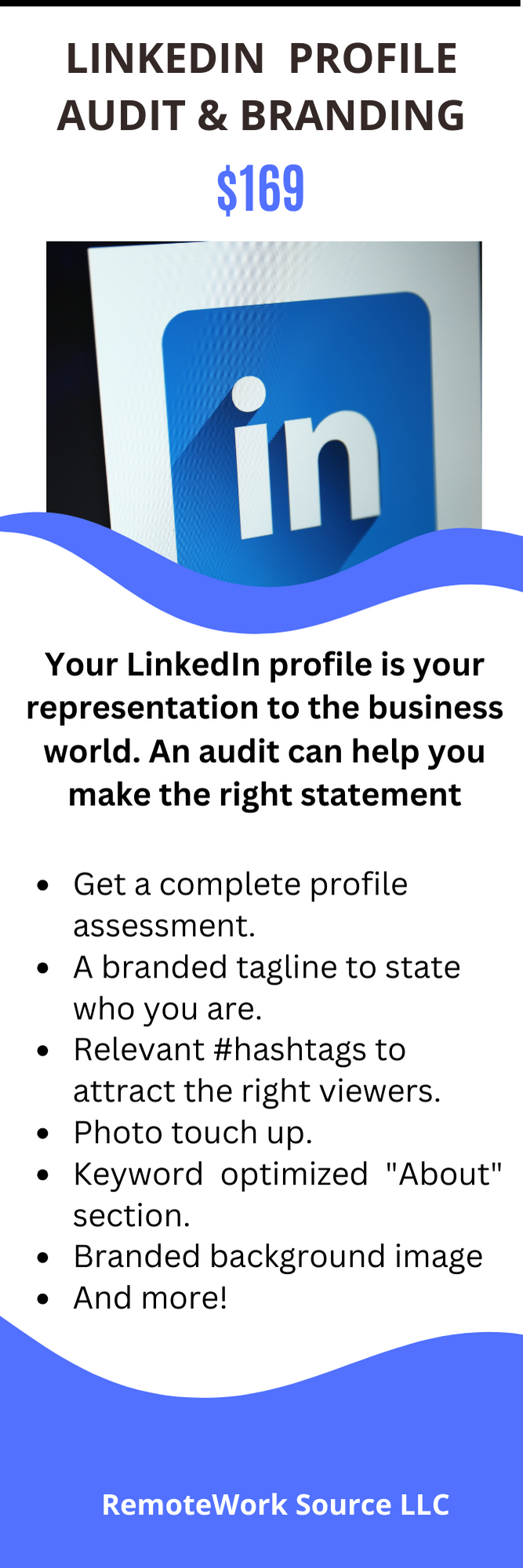
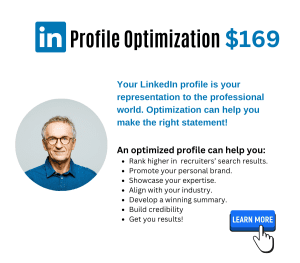
Building a strong job seeker brand is like crafting your personal success story. It’s the key to opening doors to the job you truly desire.
I couldn’t agree more, Marley. Having a strong brand creates a sense of credibility, which is crucial to establishing relationships that help your career. Thank you for your comment!
Thank you so much for writing this article. I am trying to gain clarity on my brand and you have given me some things to think about.
Hi Charlotte,
I’m glad it resonated with you and gave you some ideas. I hope your branding process improves, getting you where you want to go!